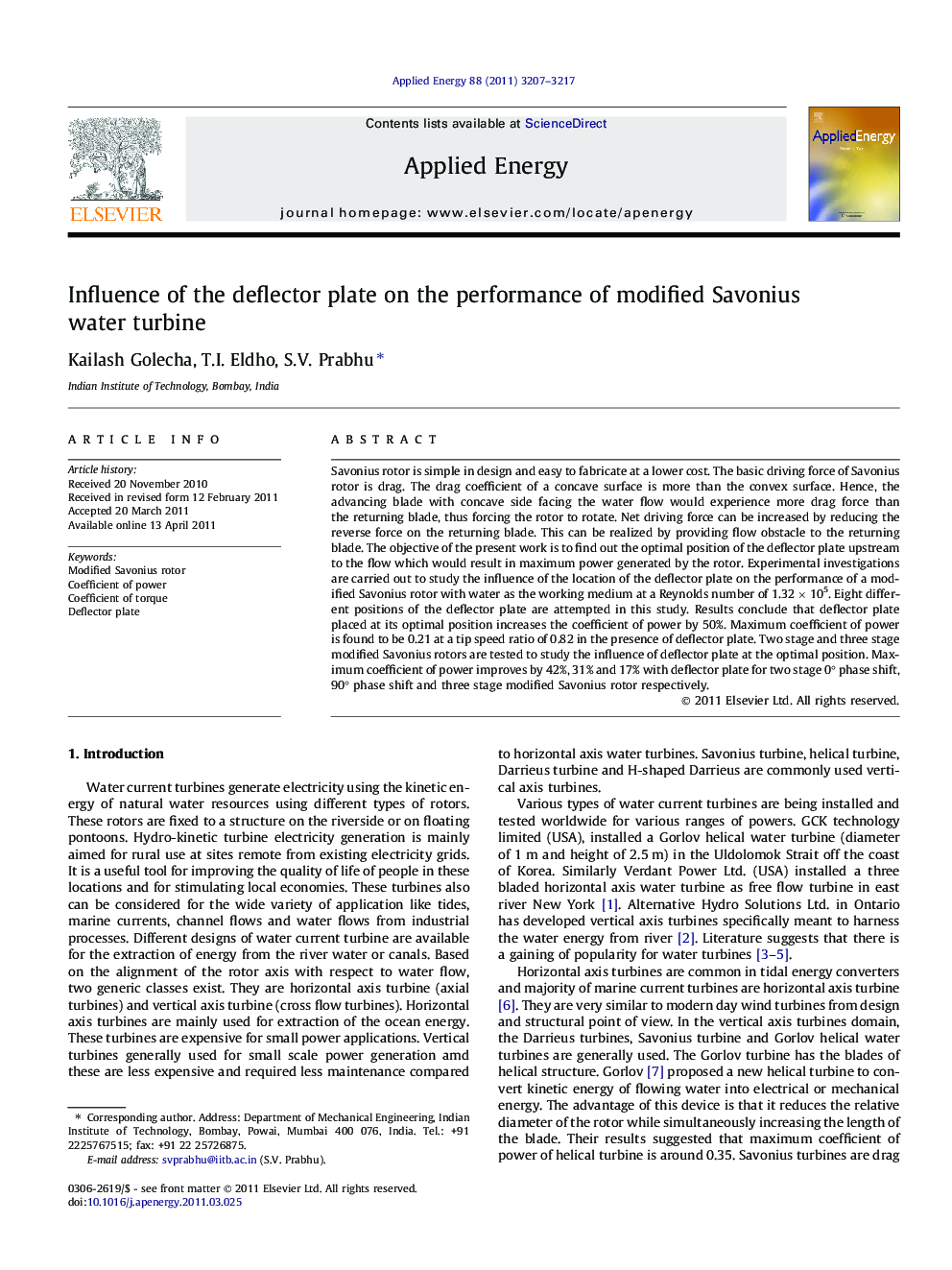| Article ID | Journal | Published Year | Pages | File Type |
|---|---|---|---|---|
| 243794 | Applied Energy | 2011 | 11 Pages |
Savonius rotor is simple in design and easy to fabricate at a lower cost. The basic driving force of Savonius rotor is drag. The drag coefficient of a concave surface is more than the convex surface. Hence, the advancing blade with concave side facing the water flow would experience more drag force than the returning blade, thus forcing the rotor to rotate. Net driving force can be increased by reducing the reverse force on the returning blade. This can be realized by providing flow obstacle to the returning blade. The objective of the present work is to find out the optimal position of the deflector plate upstream to the flow which would result in maximum power generated by the rotor. Experimental investigations are carried out to study the influence of the location of the deflector plate on the performance of a modified Savonius rotor with water as the working medium at a Reynolds number of 1.32 × 105. Eight different positions of the deflector plate are attempted in this study. Results conclude that deflector plate placed at its optimal position increases the coefficient of power by 50%. Maximum coefficient of power is found to be 0.21 at a tip speed ratio of 0.82 in the presence of deflector plate. Two stage and three stage modified Savonius rotors are tested to study the influence of deflector plate at the optimal position. Maximum coefficient of power improves by 42%, 31% and 17% with deflector plate for two stage 0° phase shift, 90° phase shift and three stage modified Savonius rotor respectively.
